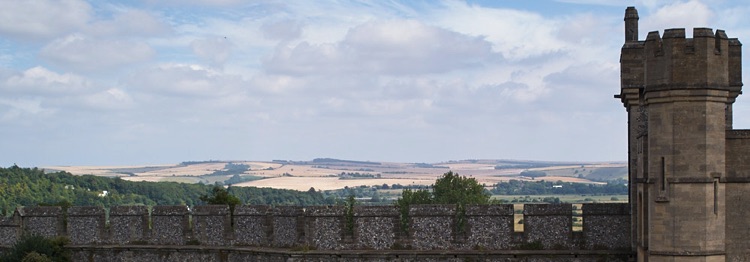1086
Year
The Domesday Book
Event
To ensure that he had not overlooked any income he could extort out of the English, William I commissioned a great survey to assess wealth and income in England. William’s surveyors recorded the amount of plough land, meadow, woodland, mills, fisheries, salt pans and the amount of tax or “geld” that individuals were required to pay. The assessments were recorded on sheets of parchment, which were assembled into folios and bound into two books known as Great Domesday and Little Domesday. Sussex, together with most counties, is entered into Great Domesday. Little Domesday contains the entries for Norfolk, Suffolk and Essex.
Domesday provides insight into the social classes that existed at that time. In Sussex, most rural inhabitants were villeins or cottars and bound to a manor. Both classes worked on the lords land and were provided housing in exchange. A villein usually rented and farmed his own land. A cottar might have a garden, but was more dependent on the manor for food. Both types of peasant were subject to tallage (taxes) at any point the lord decided. If the daughter of a villein or cottar wanted to marry, it was necessary to pay “mechett” to compensate the lord for the loss of a labor. A lord had no legal right to maim or kill a villein or cottar.
There were still slaves in Norman Sussex, although this was chiefly a practice residual from Saxon times. The church had been active trying to eliminate slavery since the conversion of Saxons to christianity in the 7th century. Bishop Wilfred had freed 250 slaves on land granted to the Selsea see by King Cædwalla of Wessex

Sussex Timeline


